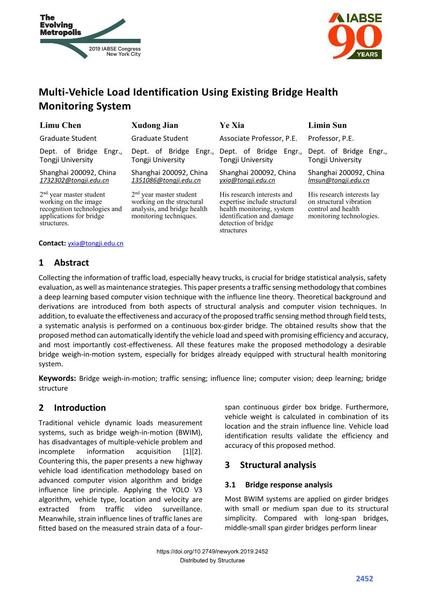Multi-Vehicle Load Identification Using Existing Bridge Health Monitoring System

|
|
|||||||||||
Détails bibliographiques
| Auteur(s): |
Limu Chen
(Dept. Of Bridge Engr., Tongji University)
Xudong Jian (Dept. of Bridge Engr., Tongji University) Ye Xia (Dept. of Bridge Engr., Tongji University) Limin Sun |
||||
|---|---|---|---|---|---|
| Médium: | papier de conférence | ||||
| Langue(s): | anglais | ||||
| Conférence: | IABSE Congress: The Evolving Metropolis, New York, NY, USA, 4-6 September 2019 | ||||
| Publié dans: | The Evolving Metropolis | ||||
|
|||||
| Page(s): | 2452-2457 | ||||
| Nombre total de pages (du PDF): | 6 | ||||
| DOI: | 10.2749/newyork.2019.2452 | ||||
| Abstrait: |
Collecting the information of traffic load, especially heavy trucks, is crucial for bridge statistical analysis, safety evaluation, as well as maintenance strategies. This paper presents a traffic sensing methodology that combines a deep learning based computer vision technique with the influence line theory. Theoretical background and derivations are introduced from both aspects of structural analysis and computer vision techniques. In addition, to evaluate the effectiveness and accuracy of the proposed traffic sensing method through field tests, a systematic analysis is performed on a continuous box-girder bridge. The obtained results show that the proposed method can automatically identify the vehicle load and speed with promising efficiency and accuracy, and most importantly cost-effectiveness. All these features make the proposed methodology a desirable bridge weigh-in-motion system, especially for bridges already equipped with structural health monitoring system. |
||||
